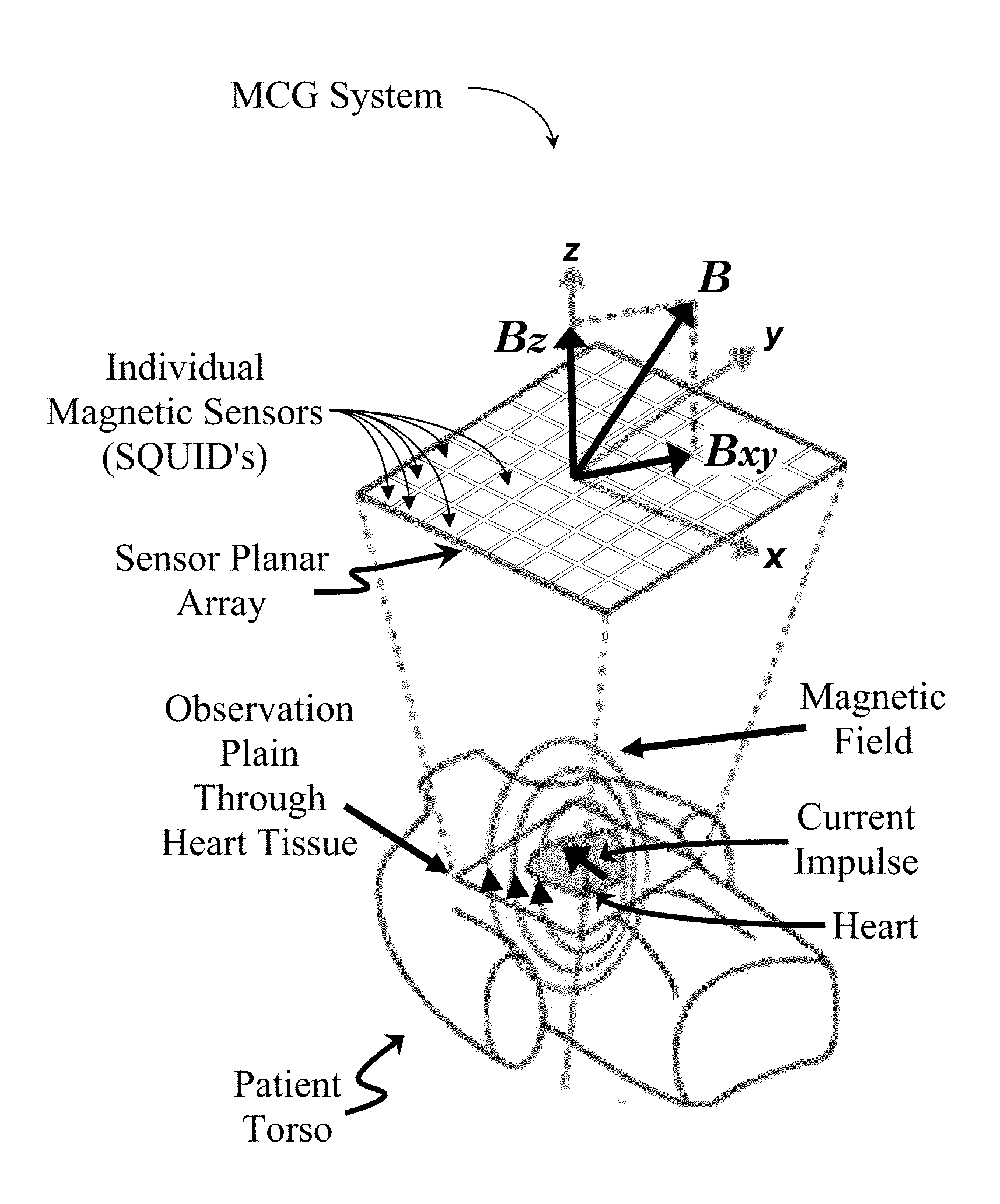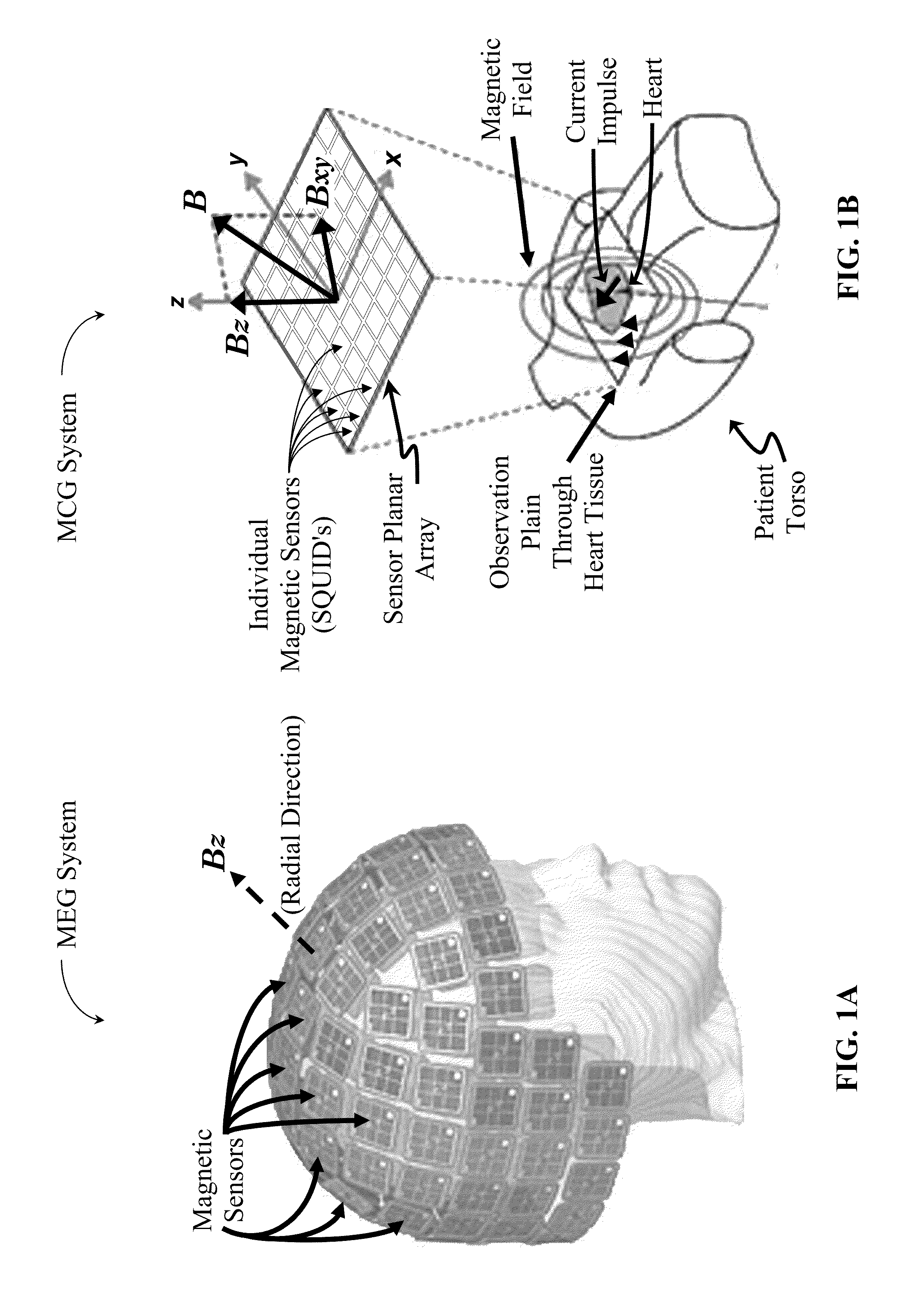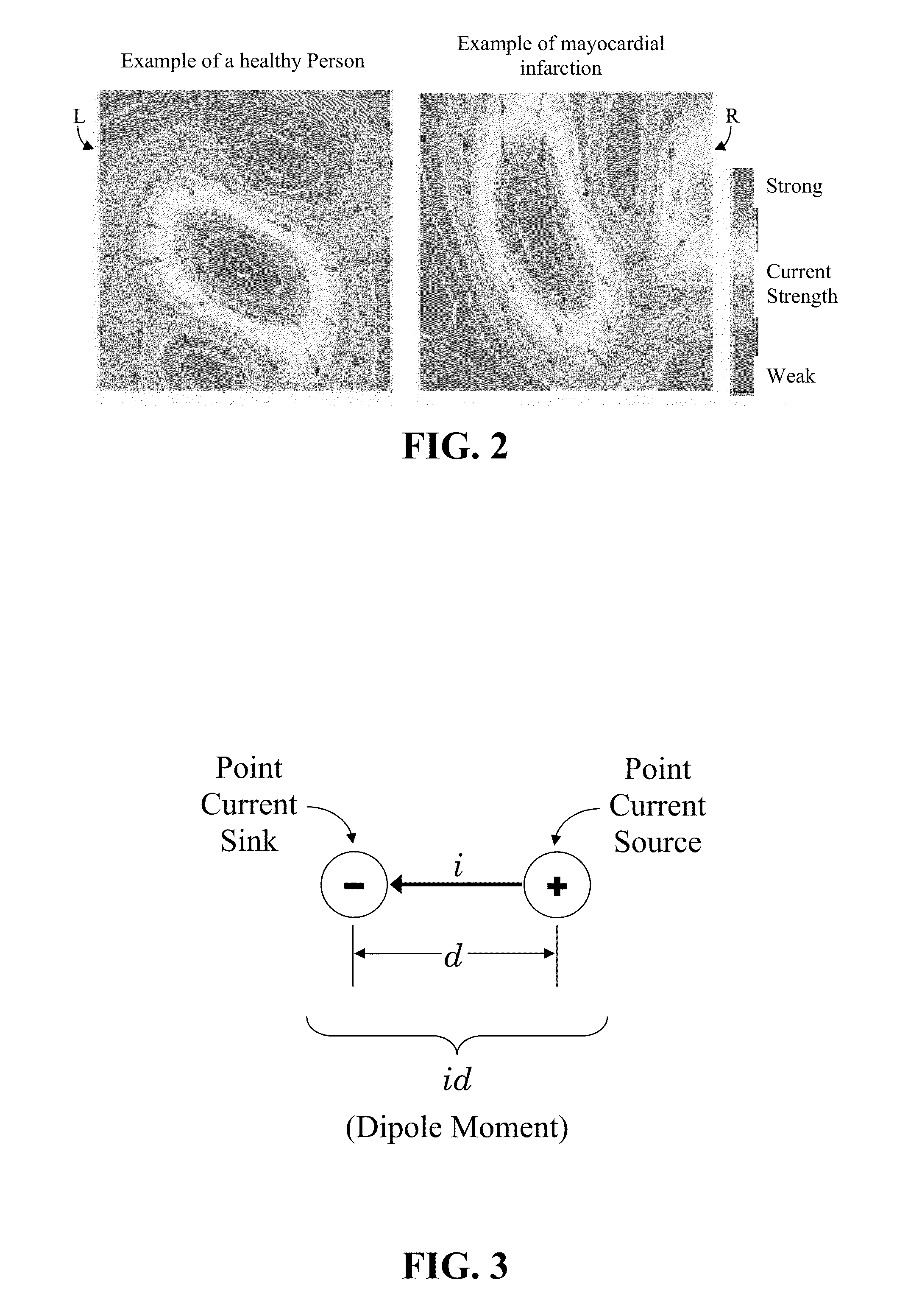Continuous Modeling for Dipole Localization from 2D MCG Images with Unknown Depth
a dipole and depth-independent technology, applied in the field of magnetic imaging of live tissue, can solve the problems of not being able to localize abnormal electric impulse currents in the heart directly, unable to estimate the electrical current source, and limited accuracy of bspm electric current localization
- Summary
- Abstract
- Description
- Claims
- Application Information
AI Technical Summary
Benefits of technology
Problems solved by technology
Method used
Image
Examples
Embodiment Construction
[0082]Electric current source estimation is a common problem in various electric imaging and magnetic imaging technologies. Estimation of a current source is beneficial in many research areas and clinical applications. For example, estimation of the position and moment of current sources in the brain has important implications for studying neuronal populations such as functional organization of cell assemblies, and localization of abnormal electric current sources in the heart is critical for diagnosing ischemic diseases such as myocardial infarction and angina cordis.
[0083]The most basic electric current source within a tissue may be the current impulse (i.e. current dipole or dipole moment). FIG. 3 illustrates a point current source (the positive source) in close proximity to a point current sink (the negative source) of equal magnitude. If their strength is i and the distance between them is d, then they form a dipole moment id. However, nerve activity in tissue typically is the ...
PUM
 Login to View More
Login to View More Abstract
Description
Claims
Application Information
 Login to View More
Login to View More - R&D
- Intellectual Property
- Life Sciences
- Materials
- Tech Scout
- Unparalleled Data Quality
- Higher Quality Content
- 60% Fewer Hallucinations
Browse by: Latest US Patents, China's latest patents, Technical Efficacy Thesaurus, Application Domain, Technology Topic, Popular Technical Reports.
© 2025 PatSnap. All rights reserved.Legal|Privacy policy|Modern Slavery Act Transparency Statement|Sitemap|About US| Contact US: help@patsnap.com



